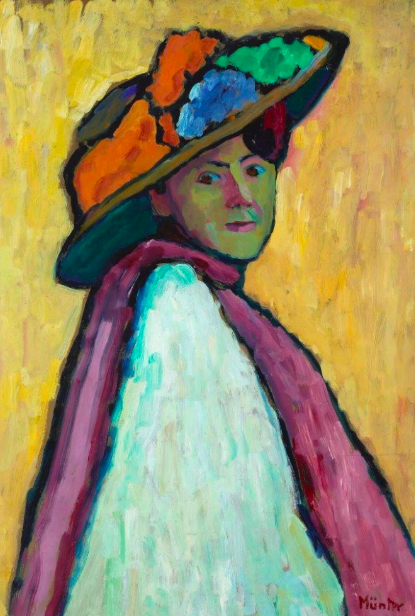Tate Modern in London offers a comprehensive look at the famous art movement, “The Blue Rider,” through an exhibition featuring works by Wassily Kandinsky, Franz Marc, and Paul Klee. This movement, which flourished in Munich during the early 20th century, revolutionized modern painting with its bold use of color and abstract forms, creating a fresh aesthetic perspective.
The exhibition at Tate Modern aims to provide a holistic view of this influential movement, founded in 1911 and recognized as one of the most international and eclectic networks of artists. A significant focus of the exhibit is on the often-overlooked contributions of women who played a key role in strengthening the movement.

One of the standout elements of the collection is the generous donation from German artist Gabriele Münter, co-founder of the movement, with 51 of her works now showcased at Tate. These pieces include portraits of her contemporaries, such as Kandinsky, Alexej Jawlensky, Erma Bossi, and Russian painter Marianne Werefkin, who also features in the exhibition with 14 pieces.

Münter played a pivotal role in preserving the legacy of “The Blue Rider.” In 1957, at the age of 80, she donated over 1,000 works, including her creations and those of prominent movement figures, to the museum, ensuring its continued impact on the art world.

The exhibition highlights the relationship between the artists and Abstract Art. Münter herself once stated, “I believe Figurative Art was more important to the movement than Abstraction. Kandinsky and Franz Marc leaned towards abstraction in their later works, but the rest of the group stayed loyal to Figurative Art.”
Munich, in the years leading up to World War I, proved to be the perfect environment for the rise of a pluralistic movement like “The Blue Rider,” particularly in its treatment of women, a rarity in the art world at the time. This inclusivity was a driving force in the movement’s international success.
Tate Modern’s exhibition presents this pluralism through various compositions, contrasts, and artistic expressions, offering visitors a unique opportunity to appreciate “The Blue Rider” as one of the most diverse and influential art movements of the 20th century in Europe.
Ask me anything
Explore related questions





